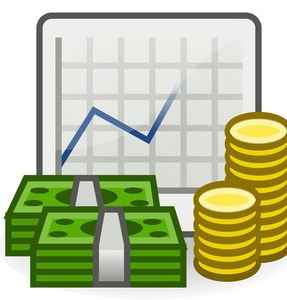The business operates on the basis of fixed assets. These are key assets other than stocks and other securities. There are a number of procedures, mainly of an accounting nature, that can be carried out with respect to fixed assets. Among the most common is revaluation. Despite the fact that its conduct is not directly prescribed by any law, this procedure is not at all a simple formality. It can have a real impact on business performance in several aspects at once. Therefore, the correctness of the assessment is extremely important. What are the criteria for determining the quality of a given procedure? What kind of norms govern its conduct? What can be the results of the revaluation of fixed assets?

What are fixed assets
First, a small theoretical digression. Before you study what a revaluation of fixed assets, consider the essence of this action. Most organizations have property that is used as a resource for the production, performance of work or the provision of services and for other purposes. The totality of its constituent elements is called fixed assets. Accounting legislation requires businesses to keep records. Based on this nuance, the definition of fixed assets can be supplemented by the wording - this is the property, the term of use of which is 12 months or more (this period is determined by the theory and practice of relevant legislation).
Among the additional criteria for recognizing certain elements as fixed assets, it can be noted, for example, whether it is intended for internal use (that is, property not for sale), as well as endowment with properties that involve economic benefits. In the all-Russian classifier of fixed assets, as well as in industry regulations, fixed assets, as a rule, are classified as buildings (or structures), as well as machines (equipment), various kinds of devices, computers, vehicles, household equipment, etc.
Subtleties of accounting
For accounting of fixed assets, two main accounting accounts are used: 01 and 03. The property of the company of the corresponding type is evaluated on the basis of three types of value: initial, residual, and restoration. As part of the first, they are taken into account. Consider what the initial cost is in more detail.
According to the generally accepted definition among Russian accountants, the initial cost is the total cost of the company for the purchase (or manufacture) of fixed assets, excluding VAT. Moreover, if the property was donated to the organization, then its initial value is based on the market price at the time of receipt at the disposal of the company.
Accounting provides for procedures in which the initial cost of property can be changed. Among those - revaluation of fixed assets. If this procedure is involved, then the property is assigned the replacement cost - it is assumed that it is more relevant than the initial one, since it takes into account current prices and other factors.

The need for revaluation
Thus, the revaluation of fixed assets is a clarification of their real value. What is this procedure for? The main issue here is to provide the correct information regarding the financial statements.It may well turn out that during the revaluation it turns out that fixed assets are much more expensive or, conversely, cheaper than their current market equivalents.
At the same time, revaluation of fixed assets is a voluntary procedure for organizations. However, it can be carried out only in relation to property that is owned by the company on the basis of ownership. Revaluation of the value of fixed assets can be carried out no more than 1 time per year.
Fixed assets in many organizations are underlying assets. The condition in which they are in operational condition may be of interest to investors or shareholders (current or potential). Information about how things are really going in the company should be reliable.
What other goals can an organization pursue by initiating procedures such as reassessment and revaluation of fixed assets? This may be, for example, an increase in the size of the authorized capital. A common option here is to increase the price of shares due to additional tangible assets generated during the revaluation process. By the way, this mechanism is useful in practice for enterprises for which the legislator has requirements in terms of the size of the authorized capital - there are such industries. Therefore, if a company operating in such a segment does not conduct a re-evaluation on time, there is a risk that the regulator will issue an undesirable order to terminate the work.
Another factor that can objectively determine the need for the appropriate procedure is the adjustment of prices (tariffs). By reassessing and revealing that the cost of production has become higher, the company can reasonably set higher prices and make its business model more stable.
In many cases, the lender (usually a bank), determining the size of a possible loan for the company, analyzes the stability of the company based on the value of fixed assets. Therefore, revaluation can play an important role in the aspect of attracting a profitable loan by a business.

Revaluation or analysis of property value?
To some extent, an analysis of the value of property is considered a phenomenon close to the revaluation of fixed assets. What is its specificity? The fact is, this kind of analysis is a procedure that is not subject to official registration and fixing in primary and accounting documents. The methodology used by the companies (as a rule, these are third-party companies) producing it may be significantly different from the standards adopted in the practice of revaluing fixed assets as such.
At the same time, the analysis of property value is usually cheaper and easier from an organizational point of view, and therefore in many cases it is preferable if the task is, for example, to show the value of fixed assets to the same bank or investors. However, when it comes to the need to reduce the base for calculating taxes, revaluation of fixed assets, amortization, and other related procedures that meet all the criteria are necessary.
Cost Factors
What are the main reasons for the change in the value of fixed assets? Two groups can be distinguished. The first is inflationary factors. Over time, goods purchased earlier in many cases become cheaper relative to the purchasing power of subjects of economic processes. Secondly, it is wear - operational or natural (due to the shelf life of parts and materials). Thirdly, it is a factor of technological progress - some types of resources (especially such as electronics) become significantly obsolete over time and therefore quickly lose in the market price.
What will happen if you do not reassess?
We noted above that revaluation of the initial cost of fixed assets is a voluntary procedure for Russian enterprises. However, the refusal to carry it out may lead to some risks.For example, if a company, not involving revaluation, artificially overestimates its assets relative to real ones, the base for property tax may increase. In turn, if the numbers are too high and clearly unreasonable, the company may lose attractiveness in the eyes of investors or creditors.
Thus, the revaluation of fixed assets - although not an optional, but very desirable procedure. In many cases, its implementation in accordance with the correct algorithm can guarantee a profitable loan, a positive assessment from existing or potential investors. Despite the fact that revaluation is a voluntary procedure, the legislation, as well as Russian accounting practice, has guidelines and criteria that determine the optimal scenario for its implementation. What could be the recommended algorithm for completing the task of specifying the value of fixed assets? Consider the possible scenarios, as well as their attendant nuances.

Revaluation Algorithm
The main mechanism for carrying out the procedure in question is the recalculation of the initial, initial value of the property or previously calculated recovery cost taking into account depreciation, which was accrued for the period of using the resource.
As a rule, the decision that the organization will re-evaluate the value of fixed assets is subject to documentation in internal corporate sources. More often than not, this is an appropriate destination management order. In this document, it is necessary to reflect exactly what resources will be re-evaluated: everything that the company has or some particular types, the methodology for fixing the procedure on the accounts, as well as a list of officials responsible for the revaluation process.
At the end of the procedure, there can be two results. The first is when the replacement cost is less than the original. In this case, the result is a markdown. The second scenario is when the replacement cost is higher. In this case, the result will be a revaluation. Sometimes accountants record the revaluation coefficient of fixed assets. For example, if the initial cost was 100 thousand rubles, and the replacement cost was 70, then the corresponding figure will be 0.70.
It is worth noting the most important nuance. If the company at least once reassessed fixed assets, then a similar procedure should be carried out in the future, and moreover on a regular basis. These are the requirements in the Accounting Rules (PBU 6/01). However, as some experts note, this document does not indicate with what specific frequency the revaluation should be carried out. It was noted only that not more than once a year.
In the recommendation of the Ministry of Finance, however, there is a clause according to which the revaluation of objects (fixed assets) should proceed based on the expected change in their value of 5%. That is, as soon as the company has reason to believe that fixed assets, such as computers, have fallen in price (or for some reason have risen in price) by 5%, it is possible to re-evaluate. Although each company has the right to set its own criteria. However, upon their determination, the company must make the appropriate entries in the documents reflecting the accounting policy.
Revaluation and accounting policies
Some experts note that the sources of law governing the revaluation procedures do not require that the accounting policies of the firm record the frequency of the relevant procedure. But if the management of the company nevertheless decided to do this, then it is useful to supplement this entry with wording reflecting the possibility of re-evaluating within a time frame that may differ from the established ones.
For example, in cases where the market situation involves a significant adjustment in the value of any types of fixed assets in a particular period.In turn, the decision that the frequency of revaluation should be changed, the company can make on the basis of the very "semi-official" analysis of the market value of resources.
Note that if the company ceases to revise the value of fixed assets on a regular basis, then, as follows from one letter of the Ministry of Finance, it can be regarded as a change in accounting policies, which, in turn, based on the requirements of accounting legislation, should have justifications supported by figures in the financial statements, and be correctly formatted in the internal documentation of the company.
Moreover, if the changes in the accounting policy of the company are such that the financial results of the organization are completely different, as if nothing had changed, a monetary assessment of the relevant adjustments should be made. As a rule, in such cases, the company should reflect the dynamics of change in relevant indicators at least on the basis of two dimensions (that is, over two years). Therefore, before deciding not to practice reevaluation, an organization should conduct at least two procedures of the appropriate type.
Grade "wholesale"
There is an interesting and useful option with reevaluation - its object is not a collection of individual objects, but a group of homogeneous ones. At the same time, the company can determine the necessary classification criteria independently - in the accounting rules there are no strict recommendations in this regard. In some other sources of law, in particular, in the letters of the Ministry of Finance, there are guidelines on which objects can be grouped based on the general nature of their purpose.
However, all the information that reflects the order and criteria in question should be reflected in the accounting policies of the company. At the same time, compiling the necessary registers, the company must adhere to the standards and names set forth in the All-Russian Classifier of Fixed Assets. In practice, a grouping of objects can be useful if the firm is faced with the task of optimizing taxation. Thus, the enterprise will have the opportunity to calculate which types of fixed assets most clearly affect the value of the taxable base.

Accounting
It will be useful to study such a nuance as the accounting for the revaluation of fixed assets. We noted above that an “semi-official” analysis of the market value of funds ordered from a third-party organization may be an alternative. But if we are talking about a full-fledged procedure of the first type, it is necessary that all stages of accounting are strictly adhered to, so that characteristic transactions, such as revaluation of fixed assets, are correctly applied. Consider this aspect.
How is the revaluation of fixed assets recorded? We said above that the result of the corresponding procedure may be revaluation or devaluation. In the first case, the results are recorded as an addition to the capital of the company. For this, the accountant makes entries in the debit of account 01 (which is called "Fixed Assets") and in the credit of account 83 ("Additional paid-in capital"). This, of course, is not the only scenario in which an account is involved. The revaluation of fixed assets may, for example, be accompanied by a result when the figures are recorded in the profit and loss accounts in relation to the settlement period. That is, the double entry will change by half - debit of account 01, credit of account 91 ("Other income and expenses").
If the result of the revaluation is the opposite of what we noted above (replacement cost is lower than the original), then the markdown is recorded. A double entry on it will look different - a debit of 91 accounts, a credit of account 01. A possible option is that the markdown will be decided to be attributed to a decrease in the capital of the company, which was formed, in turn, due to revaluation in previous periods.In this case, the double entry will be as follows - debit 83 of the account ("Additional paid-in capital") and credit of account 01.
Another possible scenario is if the markdown is higher than the revaluation calculated in previous periods. Then the record fixes the figure on the profit and loss account as an expense. It will look like this: debit 91 accounts, credit account 01. It may turn out that way, what happens disposal of fixed assets in respect of which a revaluation procedure has been initiated. In this case, a double entry may look like this: debit of account 84 ("Retained earnings"), credit of 83 account.
The results of the revaluation of fixed assets are, therefore, reflected in different accounts, depending on whether the calculated figure at the replacement cost exceeds the previous indicator or not. This is the procedure established by accounting rules.
As we see, used in the course of such a procedure as revaluation of fixed assets, postings are quite simple in their structure. At the same time, it is very important not to make a mistake in determining the numbers that are to be recorded in accounting. For this, it is important to choose the optimal method for carrying out the procedure in question.

Revaluation Methods
What are the methods of revaluation of fixed assets? In Russian accounting practice, there are two main ones. The first is the index method. Its peculiarity is that the cost of fixed assets is calculated on the basis of deflator indices, which are established by the bodies of the Federal State Statistics Service. The second method is direct conversion. Using it, organizations use a whole range of different indicators: the same data from Rosstat, market prices, information from specialized literature and the media, assistance from expert organizations. Many experts agree that the second method is more effective. It involves a more comprehensive procedure for the revaluation of fixed assets. The quality of the relevant procedure can directly affect the decision of the bank or other lender or investor regarding cooperation with the company.








